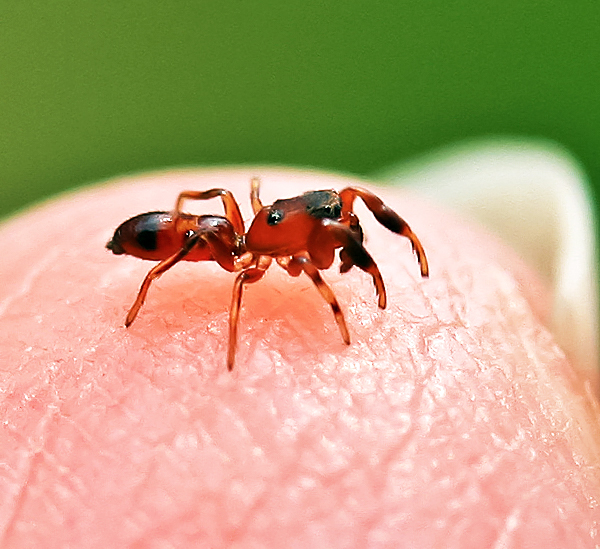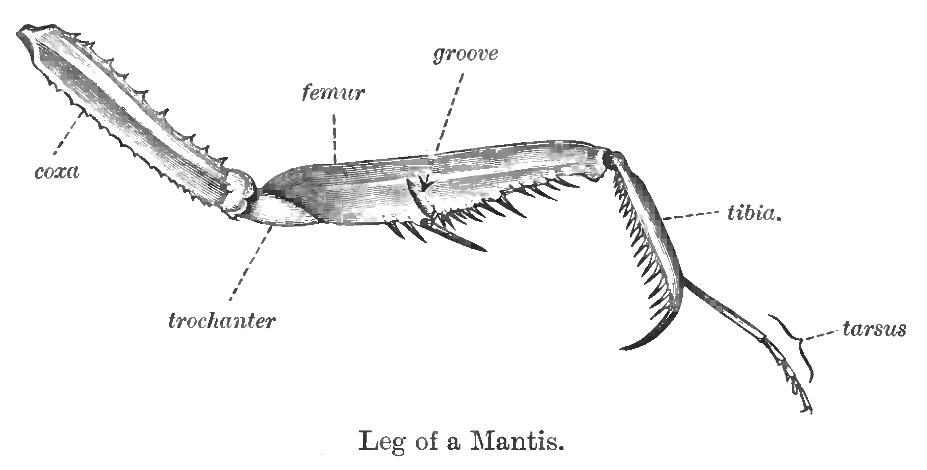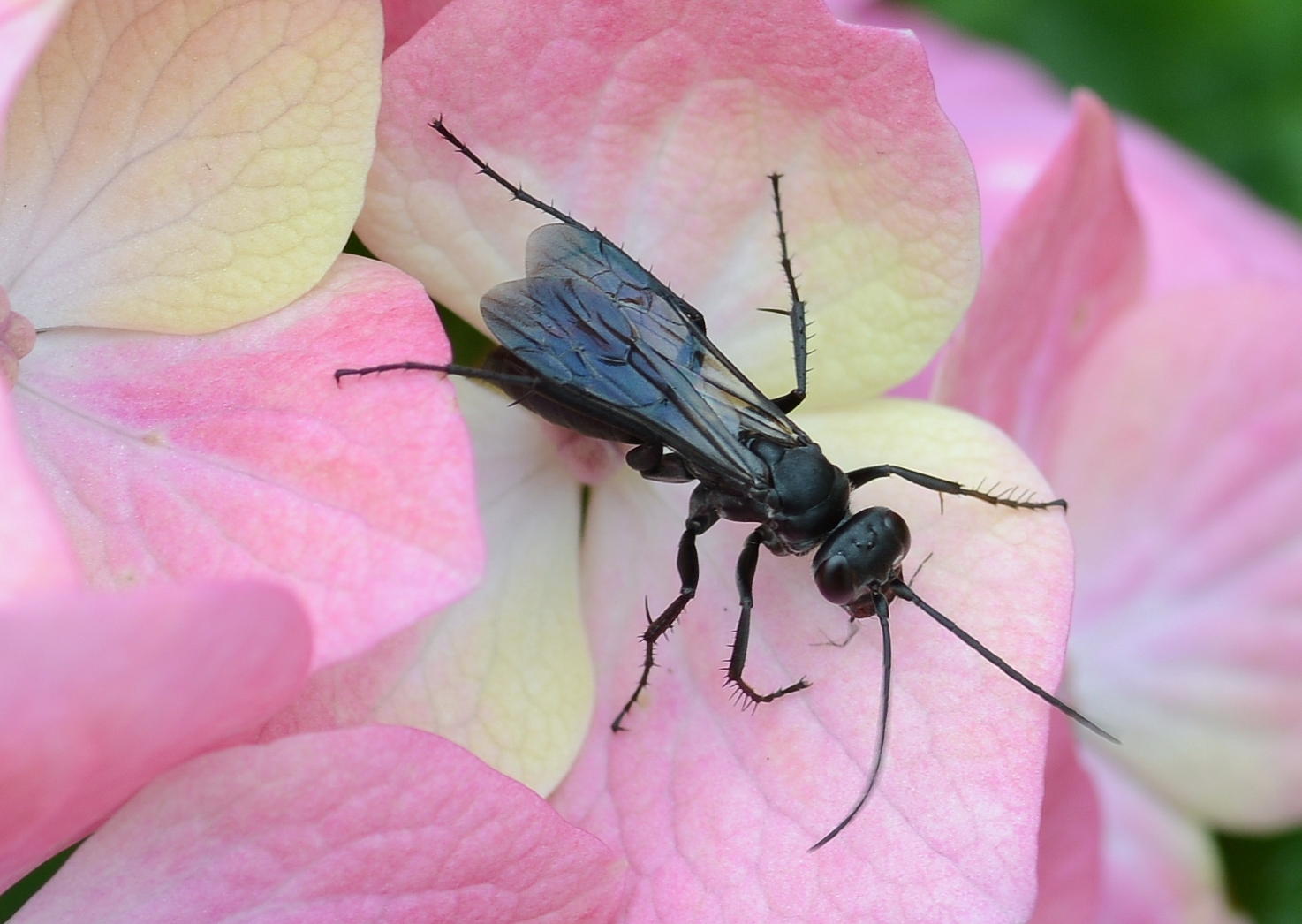|
Ant Mimicry
Ant mimicry or myrmecomorphy is mimicry of ants by other organisms; it has evolved over 70 times. Ants are abundant all over the world, and potential predators that rely on vision to identify their prey, such as birds and wasps, normally avoid them, because they are either unpalatable or aggressive. Some arthropods mimic ants to escape predation ( Batesian mimicry), while some predators of ants, especially spiders, mimic them anatomically and behaviourally in aggressive mimicry. Ant mimicry has existed almost as long as ants themselves; the earliest ant mimics in the fossil record appear in the mid-Cretaceous alongside the earliest ants. In myrmecophily, mimic and model live commensally together; in the case of ants, the mimic is an inquiline in the ants' nest. Such mimics may in addition be Batesian or aggressive mimics. To overcome ants' powerful defences, mimics may imitate ants chemically with ant-like pheromones, visually, or by imitating an ant's surface microstructure ... [...More Info...] [...Related Items...] OR: [Wikipedia] [Google] [Baidu] |
Ant And Jumping Spider Gorongosa National Park, Mozambique
Ants are Eusociality, eusocial insects of the Family (biology), family Formicidae and, along with the related wasps and bees, belong to the Taxonomy (biology), order Hymenoptera. Ants evolved from Vespoidea, vespoid wasp ancestors in the Cretaceous period. More than 13,800 of an estimated total of 22,000 species have been classified. They are easily identified by their geniculate (elbowed) Antenna (biology), antennae and the distinctive node-like structure that forms their slender waists. Ants form Ant colony, colonies that range in size from a few dozen individuals often living in small Nature, natural cavities to highly organised colonies that may occupy large territories with sizeable nest that consist of millions of individuals or into the hundreds of millions in Ant supercolony, super colonies. Typical colonies consist of various castes of sterile, wingless females, most of which are workers (ergates), as well as soldiers (dinergates) and other specialised groups. Nearly ... [...More Info...] [...Related Items...] OR: [Wikipedia] [Google] [Baidu] |
Predation
Predation is a biological interaction in which one organism, the predator, kills and eats another organism, its prey. It is one of a family of common List of feeding behaviours, feeding behaviours that includes parasitism and micropredation (which usually do not kill the Host (biology), host) and parasitoidism (which always does, eventually). It is distinct from Scavenger, scavenging on dead prey, though many predators also scavenge; it overlaps with Herbivore, herbivory, as Seed predation, seed predators and destructive frugivores are predators. Predation behavior varies significantly depending on the organism. Many predators, especially carnivores, have evolved distinct hunting strategy, hunting strategies. Pursuit predation involves the active search for and pursuit of prey, whilst ambush predation, ambush predators instead wait for prey to present an opportunity for capture, and often use stealth or aggressive mimicry. Other predators are opportunism, opportunistic or om ... [...More Info...] [...Related Items...] OR: [Wikipedia] [Google] [Baidu] |
Synageles
''Synageles'' is a genus of Salticidae, jumping spiders that was first described by Eugène Simon, Eugène Louis Simon in 1876. Species it contains nineteen species, found in the Old World from Spain to China, with one found in northern Africa (''S. repudiatus'' from Egypt), and in the New World from Mexico to Canada, and the The Bahamas, Bahamas: *''Synageles albotrimaculatus'' (Lucas, 1846) – Spain, France, Italy, Algeria, Tunisia, Turkey *''Synageles bishopi'' Cutler, 1988 – USA *''Synageles canadensis'' Cutler, 1988 – USA, Canada *''Synageles charitonovi'' Andreeva, 1976 – Kazakhstan, Central Asia *''Synageles dalmaticus'' (Eugen von Keyserling, Keyserling, 1863) – Mediterranean, Bulgaria, Romania, Ukraine, Caucasus (Russia, Azerbaijan) *''Synageles hilarulus'' (Carl Ludwig Koch, C. L. Koch, 1846) – Europe, Turkey, Russia (Europe to Far East), Kazakhstan, Central Asia, Korea, Japan *''Synageles idahoanus'' (Willis J. Gertsch, Gertsch, 1934) – USA *''Synageles le ... [...More Info...] [...Related Items...] OR: [Wikipedia] [Google] [Baidu] |
Sarinda Hentzi
''Sarinda hentzi'' is a species of jumping spider in the family Salticidae Jumping spiders are a group of spiders that constitute the family (biology), family Salticidae. , this family contained over 600 species description, described genus, genera and over 6,000 described species, making it the largest family of spide .... It is found in the United States. References Further reading * External links * Salticidae Articles created by Qbugbot Spiders described in 1913 Taxa named by Nathan Banks {{jumping-spider-stub ... [...More Info...] [...Related Items...] OR: [Wikipedia] [Google] [Baidu] |
Diolenius
''Diolenius'' is a genus of jumping spiders that was first described by Tamerlan Thorell in 1870. Species it contains sixteen species, found only in Indonesian New Guinea (provinces of Papua and West Papua), Papua New Guinea and on the Moluccas: *'' Diolenius albopiceus'' Hogg, 1915 – New Guinea *'' Diolenius amplectens'' Thorell, 1881 – New Guinea *'' Diolenius angustipes'' Gardzińska & Zabka, 2006 – Indonesia (Biak Is.) *'' Diolenius armatissimus'' Thorell, 1881 – Indonesia (Moluccas), New Guinea *'' Diolenius bicinctus'' Simon, 1884 – Indonesia (Moluccas), New Guinea *'' Diolenius decorus'' Gardzińska & Zabka, 2006 – New Guinea *'' Diolenius infulatus'' Gardzińska & Zabka, 2006 – New Guinea, Papua New Guinea (New Britain) *'' Diolenius insignitus'' Gardzińska & Zabka, 2006 – Indonesia (Moluccas) *'' Diolenius lineatus'' Gardzińska & Zabka, 2006 – New Guinea *'' Diolenius lugubris'' Thorell, 1881 – New Guinea, Papua New Guinea (New Britain) *'' Diole ... [...More Info...] [...Related Items...] OR: [Wikipedia] [Google] [Baidu] |
Jumping Spider
Jumping spiders are a group of spiders that constitute the family (biology), family Salticidae. , this family contained over 600 species description, described genus, genera and over 6,000 described species, making it the largest family of spiderscomprising 13% of spider species. Jumping spiders have some of the best visual perception, vision among arthropods — being capable of stereoptic color vision — and use sight in courtship, hunting, and navigation. Although they normally move unobtrusively and fairly slowly, most species are capable of very agile jumps, notably when hunting, but sometimes in response to sudden threats or crossing long gaps. Both their book lungs and Invertebrate trachea, tracheal system are well-developed, and they use both systems (bimodal breathing). Jumping spiders are generally recognized by their eye pattern. All jumping spiders have four pairs of eyes, with the Anatomical terms of location, anterior median pair (the two front middle eyes) being pa ... [...More Info...] [...Related Items...] OR: [Wikipedia] [Google] [Baidu] |
Mantidae
Mantidae is one of the largest family (biology), families in the Order (biology), order of Mantodea, praying mantises, based on the type species ''Mantis religiosa''; most genera are tropical or subtropical. Historically, this was the only family in the Order (biology), order, and many references still use the term "mantid" to refer to any mantis. Technically, however, "mantid" refers only to members of the family Mantidae, and not the numerous remaining Family (biology), families of mantises. Some of the most recent classifications have promoted a number of the mantid subfamily, subfamilies to the rank of Family (biology), family, e.g. Iridopterygidae, Sibyllidae, Tarachodidae, Thespidae, and Toxoderidae, while other classifications have reduced the number of subfamily, subfamilies without elevating them to higher rank. Subfamilies and genera Following the major revision of the Mantodea in 2019, the ''Mantodea Species File'' includes ten subfamilies: Choeradodinae The Amer ... [...More Info...] [...Related Items...] OR: [Wikipedia] [Google] [Baidu] |
Spider Wasp
Wasps in the family Pompilidae are commonly called spider wasps, spider-hunting wasps, or pompilid wasps. The family is cosmopolitan, with some 5,000 species in six subfamilies. Nearly all species are solitary (with the exception of some group-nesting Ageniellini), and most capture and paralyze prey, though members of the subfamily Ceropalinae are kleptoparasites of other pompilids, or ectoparasitoids of living spiders. In South America, species may be referred to colloquially as or , though these names can be generally applied to any very large stinging wasps. Furthermore, in some parts of Venezuela and Colombia, it is called , or "horse killers", while in Brazil some particular bigger and brighter species of the general kind might be called /, or "throat locker". Morphology Like other strong fliers, pompilids have a thorax modified for efficient flight. The metathorax is solidly fused to the pronotum and mesothorax; moreover, the prothorax is best developed in Pompilidae ... [...More Info...] [...Related Items...] OR: [Wikipedia] [Google] [Baidu] |
Animal Locomotion
In ethology, animal locomotion is any of a variety of methods that animals use to move from one place to another. Some modes of locomotion are (initially) self-propelled, e.g., running, swimming, jumping, flight, flying, hopping, soaring and gliding. There are also many animal species that depend on their environment for transportation, a type of mobility called passive locomotion, e.g., sailing (some jellyfish), ballooning (spider), kiting (spiders), rolling (some beetles and spiders) or riding other animals (phoresis). Animals move for a variety of reasons, such as to foraging, find food, a mating system, mate, a suitable microhabitat, or to escape response, escape predators. For many animals, the ability to move is essential for survival and, as a result, natural selection has shaped the locomotion methods and mechanisms used by moving organisms. For example, animal migration, migratory animals that travel vast distances (such as the Arctic tern) typically have a locomotion me ... [...More Info...] [...Related Items...] OR: [Wikipedia] [Google] [Baidu] |
Myrmarachne
''Myrmarachne'' is a genus of ant-mimicking jumping spiders that was first described by W. S. MacLeay in 1839. They are commonly called ant-mimicking spiders, but they are not the only spiders that have this attribute. The name is a combination of Ancient Greek ('' myrmex''), meaning "ant", and (''arachne''), meaning "spider". This genus has undergone many changes, and is still under review as more information becomes available. In 2016, several genera were split off, including '' Helicius'' and the monotypic genus '' Panachraesta''. The genus '' Emertonius'' was revalidated in 2018 after being synonymized with ''Myrmarachne'' for nearly thirty years. Description ''Myrmarachne'' have an elongated cephalothorax with relatively long chelicerae that projects forward in males. The chelicerae of males can lack venom glands. The cephalothorax has a waist, and the opisthosoma often has one too. The colors can vary from black to yellow, depending on ant species it is mimicking, and c ... [...More Info...] [...Related Items...] OR: [Wikipedia] [Google] [Baidu] |
Jumping Spider
Jumping spiders are a group of spiders that constitute the family (biology), family Salticidae. , this family contained over 600 species description, described genus, genera and over 6,000 described species, making it the largest family of spiderscomprising 13% of spider species. Jumping spiders have some of the best visual perception, vision among arthropods — being capable of stereoptic color vision — and use sight in courtship, hunting, and navigation. Although they normally move unobtrusively and fairly slowly, most species are capable of very agile jumps, notably when hunting, but sometimes in response to sudden threats or crossing long gaps. Both their book lungs and Invertebrate trachea, tracheal system are well-developed, and they use both systems (bimodal breathing). Jumping spiders are generally recognized by their eye pattern. All jumping spiders have four pairs of eyes, with the Anatomical terms of location, anterior median pair (the two front middle eyes) being pa ... [...More Info...] [...Related Items...] OR: [Wikipedia] [Google] [Baidu] |
Myrmecoris Gracilis
''Myrmecoris gracilis'' is a species of flightless Hemipteran bug from the family Miridae. The genus '' Mymecoris '' is monotypic with one Palaearctic species. It differs in its outward appearance and way of life from other "grass bugs" in the Stenodemini, being predatory and an effective ant mimic.Chinery, 2005 Description The bugs are four to six millimeters long. The adult insects resemble ants of the genus ''Formica'', the larvae dark '' Lasius'' ant species. The appearance of a typical hymenopteran "waist" is created by the paler coloration of the front of the abdomen and the back of the thorax, contrasting with the rest of the body which is mainly black, effectively camouflaging the bug's thick waist. They are often found together with ants, to which they have a convincing but superficial resemblance. The long rostrum is held inconspicuously beneath the head. The bugs suck plant juices, but feed mainly on aphids, other small insects and insect eggs, sometimes on ... [...More Info...] [...Related Items...] OR: [Wikipedia] [Google] [Baidu] |







